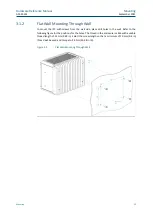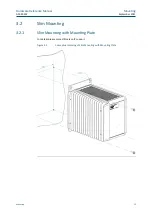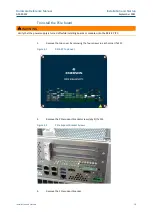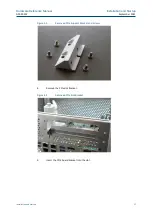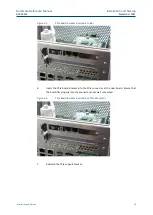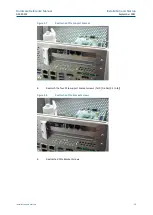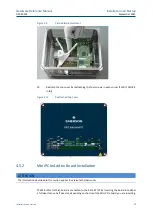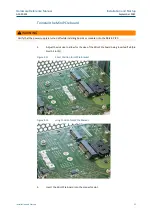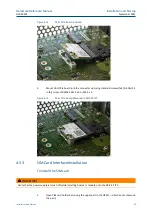
Hardware Reference Manual
Unpacking and Inspection
GFK-3022E
September 2021
Unpacking and Inspection
7
2.3
ESD and EMI
Electrostatic Discharge (ESD) is the discharge of static electricity. Electromagnetic Interference
(EMI) is a disturbance generated by an external source that affects an electrical circuit by
electromagnetic induction, electrostatic coupling, or conduction. ESD and EMI issues may show
up in complete and operational systems. There are many ways to avoid problems with these
issues.
Any operational system with cables for I/O signals, connectivity or peripheral devices provides
an entry point for ESD and EMI. If Emerson does not manufacture the complete system, including
enclosure and cables, it is the responsibility of the system integrator and end user to protect
their system against potential problems. Filtering, optical isolation, ESD gaskets and other
measures might be required at the physical point of entry (enclosure wall of box or rack). For
example it is state-of-the-art that protection cannot be done at the internal connector of an RTM
if a cable is attached and routed outside the enclosure. It has to be done at the physical entry
point as specified in this document.
Products manufactured by Emerson should normally be suitable for use in properly designed
and produced customer equipment (system boxes or operational systems) without any major
redesign. However, the systems might be subject to problems and issues once assembled,
cabled and used. The end user, system integrator or installer must test for possible problems
and in some cases show compliance to local regulations as required in his country or by the
intended application.
CAUTION
Static-sensitive Devices: Handle only at static-safe work stations.
CAUTION
This is an FCC Class A product for use in an industrial environment. In a home or residential environment, this
product may cause radio interference in which case the user may be required to take adequate measures.
CAUTION
Drain static electricity before you install or remove any parts. Installing or removing modules without observing
this precaution could result in damage to this and/or other modules or component in your system.
Wear a properly-functioning anti-static strap and make sure you are fully grounded. Any surface
upon which you place the unprotected module or unit should be static-safe, which is usually
facilitated by the use of anti-static mats. From the time it is removed from the anti-static bag
until it is in the board carrier and functioning properly, extreme care should be taken to avoid
zapping the component with ESD. Be aware that you could zap the component without knowing
it; a small discharge, imperceptible to the eye and touch, can often be enough to damage
electronic components. Extra caution should be taken in cold and dry weather when
electrostatics easily builds up.
Only after ensuring that both you and the surrounding area are protected from ESD, carefully
remove the component from the shipping carton by grasping the module on its edges. Place the




















